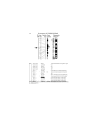Functional genomics in gastroenterology
- PMID: 11034570
- PMCID: PMC1728106
- DOI: 10.1136/gut.47.5.601
Functional genomics in gastroenterology
Figures




Similar articles
-
Impact of the "new science" of genomics.Hosp Q. 2001-2002 Winter;5(2):87-90. doi: 10.12927/hcq..16686. Hosp Q. 2001. PMID: 12061114
-
The life science revolution.Manag Care. 2002 Sep;11(9 Suppl):15-8. Manag Care. 2002. PMID: 12369338 No abstract available.
-
Pharmacogenomics and pharmacogenetics. 1st Spanish Congress on Pharmacogenomics and Pharmacogenetics, January 23-25, 2005, Valencia, Spain.Pharmacogenomics. 2005 Apr;6(3):205-7. doi: 10.1517/14622416.6.3.205. Pharmacogenomics. 2005. PMID: 16013951 No abstract available.
-
Genomics and plant breeding.Biotechnol Annu Rev. 2001;7:195-238. doi: 10.1016/s1387-2656(01)07038-7. Biotechnol Annu Rev. 2001. PMID: 11686045 Review.
-
Gene level diagnostics in gastroenterology.Digestion. 1997;58 Suppl 1:82-5. doi: 10.1159/000201535. Digestion. 1997. PMID: 9225101 Review. No abstract available.
Cited by
-
Altered gene expression in highly purified enterocytes from patients with active coeliac disease.BMC Genomics. 2008 Aug 8;9:377. doi: 10.1186/1471-2164-9-377. BMC Genomics. 2008. PMID: 18691394 Free PMC article.
References
Publication types
MeSH terms
LinkOut - more resources
Full Text Sources
